[Introduction]
[Background]
Erlin Township, the so-called rural area, in Changhua County has the only one "Tshia-Kóo-Lāng art performance with Qian Long sticks" in Taiwan. After the reconstruction of RenHe Temple in the GuangTou Community of Erlin Township, people found that there was a box with good old memory of the elderly, the Qian Long sticks. The GouTou community sought the assistance of Mr. Bao-Jia Wu, the principal of GuangXing elementary school, and hoped that the "Tshia-Kóo-Lāng" art performance could be revived with the school's strength in inheriting the culture.
[Plan]
We are all in Dierlin. For us, Tianhe Palace is the center of assembly and faith of the local people. When the temple was renovated in 2017, we found that the unique Tshia-Kóo-Lāng art performance with Qian Long sticks culture of Erlin was lost for 50 years. It aroused our enthusiasm to know our hometown deeply and explore local history and culture. Under the guidance of the teacher, we can go deeper into the hometown community, understand the local culture, and reproduce the culture of the Tshia-Kóo-Lāng. Let's work hard together with contribution to our hometown.
[Reserch]
In this independent research, I hope that through the method of interviews and surveys, I can understand the unique Tshia-Kóo-Lāng art performance with Qian Long sticks culture and understand the local residents’thoughts and feelings as a follow-up study of the Tshia-Kóo-Lāng culture. According to the research background, motivation and plan, the research questions are as follows:
(1) Know the history of Tshia-Kóo-Lāng art performance with Qian Long sticks culture.
(2) Study Tshia-Kóo-Lāng art performance with Qian Long sticks and join the school curriculum.
(3) Discuss the impact of Tshia-Kóo-Lāng art performance with Qian Long sticks on the community.
[Progress]
According to the research ideas put forward earlier, we set out to carry out an independent study of "Tshia-Kóo-Lāng art performance with Qian Long sticks." The course and work schedule of this independent research are as follows:


[Motivation]
We choose to study the local Tshia-Kóo-Lāng culture as the subject of independent research because:
(1) As an Erlin people, we want to understand the impact of Tshia-Kóo-Lāng art performance on the community and schools.
(2) This is the local culture that has disappeared for nearly 50 years, and now it has reappeared, making us want to know more about the rise and fall of theTshia-Kóo-Lāng art performance.
(3) Many regions have Tshia-Kóo-Lāng art performance, but only Taiwan’s Gou Tau region is unique to Qian Long sticks.
Literature
Tshia-Kóo-Lāng was organized during the leisure time of the ancestors, and was organized to meet the needs of the temple fair. As the composition of the members of the society changed, it was not easy for the whole performance style to decline. With the joint efforts of the Goutou community, local elementary schools, and local people, we started from the local area, combined community resources and online marketing, and jointly promoted Erlin's Tshia-Kóo-Lāng art performance with Qian Long sticks. Next, we will deepen the basic work of field investigation. With the guidance of professionals and the joint participation of children, we will record the beginning and end of the local development of the Tshia-Kóo-Lāng art performance!
There are two kinds of art formations in the temple fair: "Tshia-Kóo-Lāng" and "Thiàu-Kóo-Lāng". "Tshia-Kóo-Lāng" is a performance type composed of singing and dancing with pipe accompaniment. "Thiàu-Kóo-Lāng" is kind of drumming and hilarious dynamic performance mode. What we mainly researched this time is a literary ensemble composed of singing and dancing with pipe accompaniment. "Tshia-Kóo-Lāng" originated from the "seven-role play". The seven-role play is a study of hanging silk cymbals, combined with dancing "Qian Long sticks" such as bamboo digging holes to insert copper coins, tapping the body parts to produce bells, A very local performance mode.
Huang Lingyu (1990) explained the origins of the Tshia-Kóo-Lāng: "Taiwan Tshia-Kóo-Lāng has its roots in southern Fujian. It is a popular singing and dancing opera such as yangko and flower drums in the Central Plains. Combined with the music and folk songs of the local Nanguan system, it transformed into a singing and dancing drama, and was introduced to Taiwan for a large number of immigrants in the late Ming and early Qing dynasties. "Therefore, she believes that the Tshia-Kóo-Lāng is derived from the flower drum and yangko.
Zeng Yongyi and Shi Deyu (2011) Tshia-Kóo-Lāng, a folk performing art in Taiwan, also has other translations of "Drum a Drum", or "Drum Opera". It has the meanings of "flipping" and "faking", so it can also be called "Tshia-Kóo-Lāng"; the word "dancing" also has the meaning of "dance". In the history of China, there are countless traditional music, dramas and techniques. Among them, the use of this word is common. For example, the word "Tang teasing" refers to the Tang Dynasty drama. The word "nong" here has a meaning of playfulness and willfulness, which is also one of the characteristics of Tang drama. The word "nong" is a noun, which means that the word "nong" in "Plum Blossom Lane" is a tune.
Lin Jixuan (2016) learned from interviews with Mr. Shi Chaoyang in Hemei Town that during the early period of Zheng Chenggong's arrival in Taiwan, many dramas followed, and the first arrival in Taiwan was on the western coast of Taiwan (Figure 2) As the west is just plain, and it is relatively easy to develop, it settles down. The music species brought together at that time gradually developed in the western coastal areas, so it was discovered that almost all music species appeared in the west.
Lin Meimei (2013) published many related books on traditional Tshia-Kóo-Lāng art research, and was different from other books in field investigation and oral history records. This research is based on a master thesis of Lin Jixuan from Nanhua University. Research on the talented Tshia-Kóo-Lāng in Zhenyagou, understand the classification and general situation of Tshia-Kóo-Lāng, and discuss the similarities and differences between Erlingou's performance costumes and footsteps and other Tshia-Kóo-Lāng. Later, with Changhua Gouto Tshia-Kóo-Lāng Lin Meimei "Changhua County Song Museum and Wuguan" South Changhua Coastal Edition 2013 edition, we will guide you to understand the glorious history of Gouto Tshia-Kóo-Lāng!
Finally, in the process of research, through the collection of literature data and actual field surveys and interviews with relevant persons, I discovered the uniqueness of Qian Long sticks, and also discovered more performances, matching flutes, coconut shell strings, big wide strings, and Yueqin. Four wind instruments and tracks, the most precious thing is that Tshia-Kóo-Lāng art performance culture has not been abandoned, and under the guidance and care of teachers and the community, not only regaining the Tshia-Kóo-Lāng culture that has disappeared for 50 years, but also add many changes to the Tshia-Kóo-Lāng art performance.
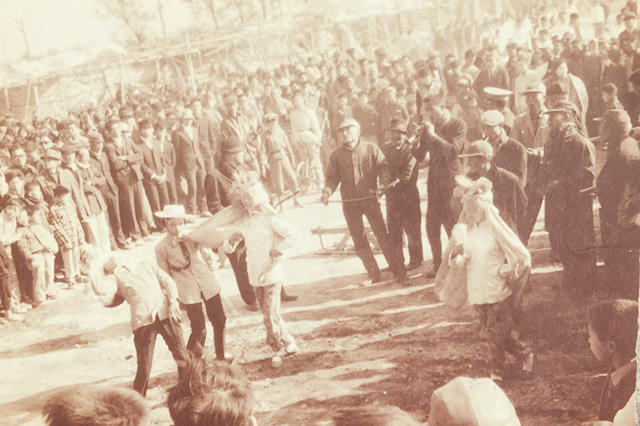
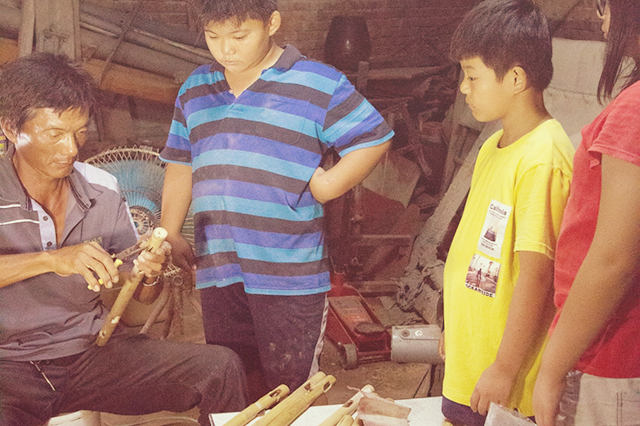

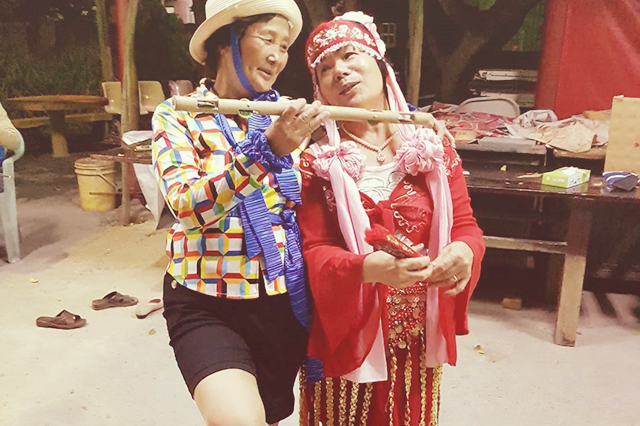
Research
[Method]
Lin Shuxin (2010) emphasized the need for face-to-face verbal conversations and inquiries from people related to the research subject to understand their perspectives and deeper perspectives. Through the in-depth dialogue between researchers and interviewees on the same topic, to collect first-hand research data, to understand the respondents' thoughts in depth. The research method is mainly divided into three methods: "structured interview", "semi-structured interview" and "unstructured interview" (Pan Shuman, 2003).
The interview method adopted in this study is a "semi-structured interview". The interview outline is designed in advance to guide the interviewees to express their ideas effectively and concretely, and to give the interviewees free and flexible space, and can add explanations in due course. Feel yourself. The main interviewees of this research include: Teacher Lin ○-You, a Tshia-Kóo-Lāng artist, Chairman of Zhao ○-Wen, Goutou Community Development Association of Changhua County, and Mr. Lin ○-Sen, Gouto Tianhe Temple manager of Changhua County.
[Survey]
Before conducting a formal field survey and interview, we first visited Mr. Shi ○-Yang, an elderly man, who was 88 years old, in nearby Hemei Town, and found that Qian Long stick was originally a local drama in Changhua and Yunlin. Teacher Shi has a considerable degree of in-depth research on the car drum array, but it is not the same as the Qianlong sticks in Erlingou head. Erlingou's Tshia-Kóo-Lāng is a Taiwan-style unique QianLong stick as the main instrument. The backcourt and dance steps used at the time are different from other neighboring towns and towns, forming a unique art of Gouto.
Then he visited the director of the Taiwan Traditional Skills Promotion Association, Mr. Yang ○-Ru. The teacher originally engaged in teaching work, and later decided to devote herself to the "Changhua Baigong Technology Show and Transformation Mission". He has been engaged in research in related fields for more than ten years, and is expected to complete the record of 100 artists. At present, the stories of 60 artists have been written into books. The teacher used dictation, video, and some literature materials to let us know the various traditional skills in the county. At the same time, he understood the hard work of the technicians and the difficulty of living, and extended a respectful attitude towards various industries.
The 1st Interview:
On October 18, 2019, at 17:30 pm in Changhua County, we interviewed Mr. Lin ○-Sen, Gotou Tianhe Temple manager of the Changhua County. The interview lasted about 40 minutes. Through the interview, I learned about the historical reasons of Tshia-Kóo-Lāng art performance with Qian Long sticks.
Could you perform Tshia-Kóo-Lāng?
Lin: "I can’t perform the Tshia-Kóo-Lāng art, but when I was young, I probably saw it in my teens. It was almost elementary school days. There are fewer Tshia-Kóo-Lāng art performance. My classmates performed before."
Why is Tshia-Kóo-Lāng mostly performed by elementary school students?
Lin: "I heard my wife say that the last time she performed the Tshia-Kóo-Lāng was 14 years old, and the elementary school was about to graduate, but then it was gone. The most important thing for her is that she has to go out to work and earn money for her family. Earlier in the agricultural society, the money was less, the fertility rate was higher, and the family had to be helped, so she stopped perfroming.
How old are you now?
Lin: "I am 67 years old."
Can you share with us the situation of the Tshia-Kóo-Lāng at that time?
Lin: "When I was in my teens, I saw it at that time. In the early agricultural society, children were more simple and less exposed to the outside. Unlike today ’s children, they have mobile phones to play. So probably in the 50 years of the Republic of China, I have seen Tshia-Kóo-Lāng art performance."
Do you know when the local Tshia-Kóo-Lāng culture started?
Lin: "The history of the Tshia-Kóo-Lāng should be more than ninety years. My father-in-law once instructed children to perform the Tshia-Kóo-Lāng. It should have been around 20 years since the Republic of China, that is, during the period of Japanese rule."
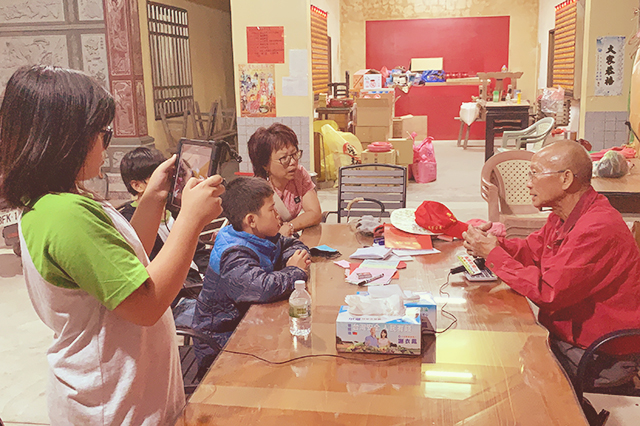

The 2nd Interview:
At 15:00 on November 6th, 2019, we interviewed Chairman Zhang ○-Wen of Goutou Community Development Association of Changhua County. The interview lasted about 30 minutes. Through the interview, we discussed the impact of Tshia-Kóo-Lāng on the community.
How long do you study the Tshia-Kóo-Lāng?
Zhao: "I have studied it for more than three years. From the moment I found the box, the Tshia-Kóo-Lāng has appeared in my life. It has been more than three years like this."
Have you ever performed Tshia-Kóo-Lāng?
Zhao: "I also performd a little bit when I was studying at that time."
Could you perform the complete Tshia-Kóo-Lāng?
Zhao: "No, I couldn’t perform for the complete one, because later I was just recording and helping photography. So I didn’t perform anymore!"
How did you feel when you found the old box?
Zhao: "I didn’t know that there was such a thing as the Tshia-Kóo-Lāng. I asked the elders before to know that our village had the Tshia-Kóo-Lāng 50 years ago. Because it was lost, I was very excited to find it. I hope you can find it out and let the Tshia-Kóo-Lāng in front of everyone and the gods, so this is very important. "
Do you know the musical instruments in the backcourt of the Tshia-Kóo-Lāng?
Zhao: "I don't know very much about the backcourt, but I do know some instruments, such as Yueqin, Erhu, stringed instruments, orchestra."
Why do you promote the Tshia-Kóo-Lāng?
Zhao: "Because of being lost for 50 years, I really can't find this kind of thing in other places. When you talk to the old people, their eyes are suddenly bright. The elderly in the area are relatively simple and want to get their enthusiasm back. This is how Tshia-Kóo-Lāng art performance is displayed again. "
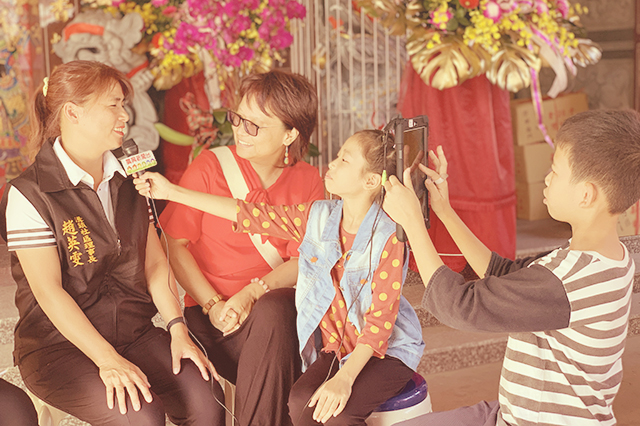
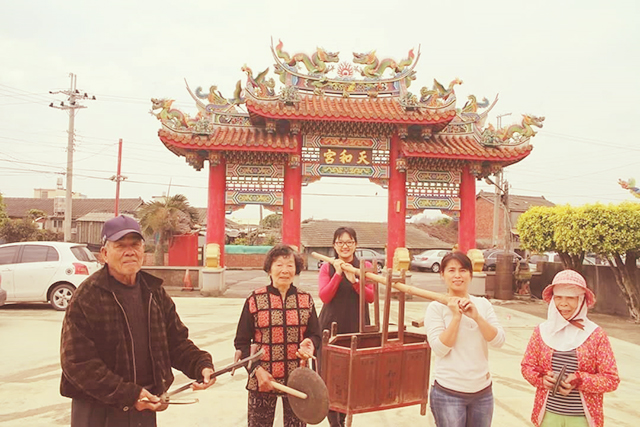
The 3rd Interview:
At 10:00 on the morning of November 17, 2019, I interviewed the teacher of the Tshia-Kóo-Lāng artist Lin ○-You. The interview lasted about 40 minutes. Through the interview, I discussed the influence of Tshia-Kóo-Lāng into the school curriculum.
How do you feel about teaching us the Tshia-Kóo-Lāng?
Lin: "Because your Tshia-Kóo-Lāng is different from that in the south, I was very happy and excited about discovering this traditional Qianlong stick we lost."
How did you feel about our studies in the past two years?
Lin: "That’s because you also started learning from begining. I found out that there is room for improvement, as long as you repeat some of the key points and practice it again, you will achieve a better performance. "
Why do you insist on teaching us from Kaohsiung?
Lin: "First, because this technology has been lost in Taiwan!" "Second, the students are also very serious in the practice process. Like today we can see the results you have presented. In contrast, in this result, we can know that our Tshia-Kóo-Lāng culture will be spreaded out."
Which part do you think we need to continue working on? What kind of effort does the school need to make the Tshia-Kóo-Lāng better?
Lin: "In addition to the more solid footsteps, you must have a certain understanding of their own routines. Then I believe that after learning Fan Po song, based on this, this culture will slowly recover again from our Erlin side, and there is an opportunity to carry forward. "
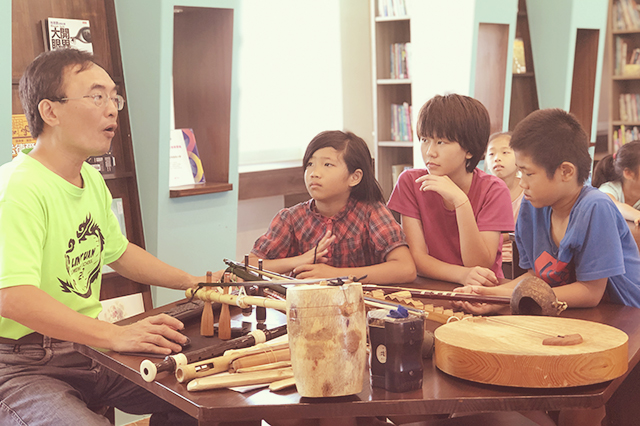
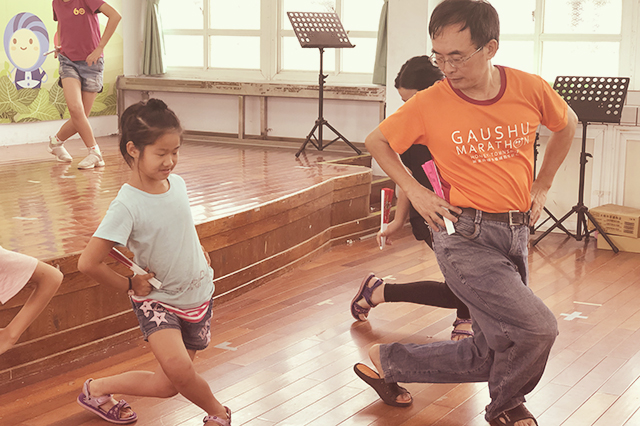
[Analysis]
For community:
1. In the Changhua Wuguan and Quguan-South Changhua Binhai chapter, recorded the grand event of the Wuguan and Quguan in Erlingou, Changhua, and the oral statements of various leaders! Goutou's Tshia-Kóo-Lāng was well-known in the era of Erlin and Fangyuan, and they also played with the puppet theater and opera club (Lin Beauty, 2013).
2. Through this field investigation, I learned a lot of oral misinformation. Lin Meimei’s book Zhanghua Wuguan and Quguan was compared with the current old oral dictatorship of the Goutou community to understand the trajectory of the rise and fall of the Tshia-Kóo-Lāng group in the Goutou community .
3. Effectively document the connection between Teacher Lin Meimei's book and the current field investigation. It has been nearly seven years since the publication of Teacher Lin Meimei's book. The personnel changes are too great and the age is aging. With the lack of written records, our precious culture will soon be affected by the environment.
For school:
1. In Changhua, the form and content of the Tshia-Kóo-Lāng performing, let us have a general understanding of the direction and the research. (Lin Jixuan, 2016)
2. The book has rich graphical records of the clothing and instruments and accessories of the Tshia-Kóo-Lāng, so that we can know more specifically.
3. There are clear icons on the dance moves! There is an opportunity to compare the contents of the Tshia-Kóo-Lāng that we are currently studying at school!
Result
The results of this independent research on the Tshia-Kóo-Lāng art performance with Qian Long sticks in Changhua are as follows:
(1) Tshia-Kóo-Lāng art performance with Qian Long sticks appeared at Erlingou in about two decades of the Republic of China, and gradually disappeared in about fifty years of the Republic of China.
(2) In the early days, because of the large population of agricultural society and no electronic products, teachers would use their spare time to guide students to perform. However, whe students grow up, they have to help farming, work outside home or take care of the family. So they no longer performed anymore. With the advancement of the times, the migration of the population, the decline in the birth rate, and the inability to inherit the skills, the local Tshia-Kóo-Lāng art performance culture has gradually disappeared!
(3) The early stage of the Tshia-Kóo-Lāng art was only performed in the event of welcoming the temple fair, and the use of "QianLong sticks" to perform is unique to Taiwan! It is different from the Tshia-Kóo-Lāng art where ordinary joy and funeral occur.
(4) The early Tshia-Kóo-Lāng art performance and formations are more complex and rich in changes!
(5) The fabrics and turning tools used by the costumes from the front Tshia-Kóo-Lāng art performance are more beautiful than those currently used!
(6) The Tshia-Kóo-Lāng art performance is mainly matched with Yueqin, Erhu, stringed instruments, orchestras and other southern wind instruments.
(7) The production method of Qianlong stick can be understood from the restoration and search of future generations, and we can understand the combination of the wisdom of the ancestors and the times!
(8) The Tshia-Kóo-Lāng art performance with Qian Long sticks culture that has disappeared for nearly 50 years. Through this year's literature review, field surveys, and video records, we have a better understanding, and explore the prosperity of the car and drums in the past. The importance of local cohesion.
The traditional culture reappeared after a long period of loss. This feeling of regain has greatly encouraged the Goutou community and assisted elementary school teachers and students. It seems that we suddenly have a very important mission to complete this matter.
In the future, we hope that we can conduct professional training in the backcourt instruments and further explore the vocal and dance steps of the car drum array, so that there will be a complete performance of the frontcourt and backcourt. We can gradually implement this goal and complete the revival of the local "Tshia-Kóo-Lāng art performance with Qian Long sticks" culture.

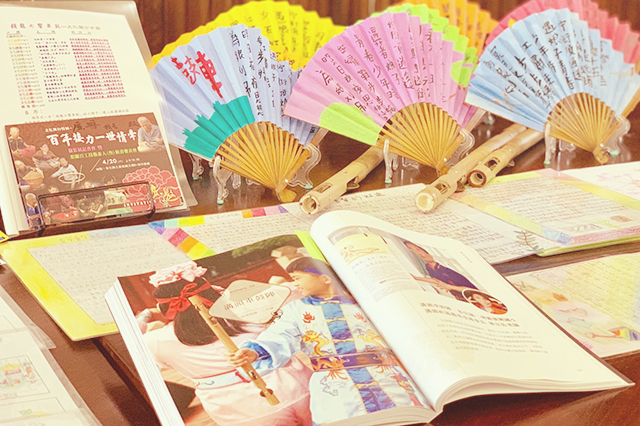
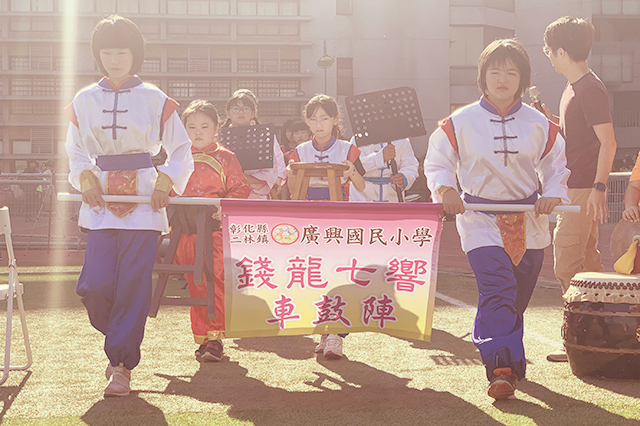
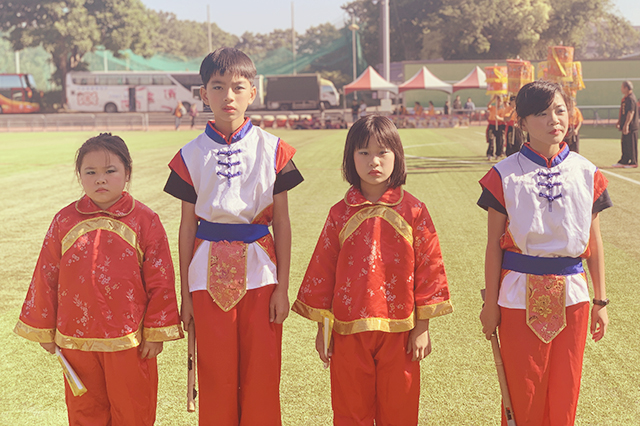
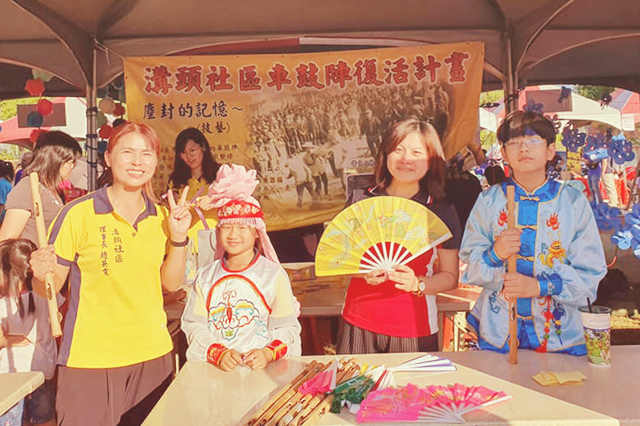
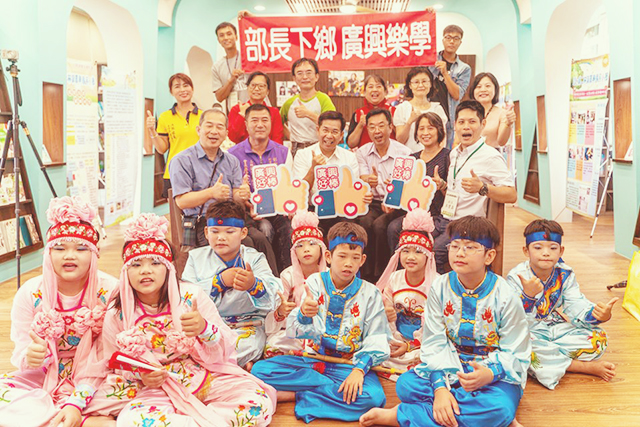
Review
I. After starting to contact Che Guzhen:
In two years ago, during the renovation of a temple, a box was found, which led to our fate with Che Guzhen. At first, we It can only be explored by local elders or by querying related materials. However, with the help of many teachers and communities, we can have clear learning goals and research directions. In addition, the school also invited Yi Zhen teachers to allow us to carry out practical operations, from the front footsteps of the rear Tshia-Kóo-Lāng to the humming back field music, let us understand that each track has different stories, connotations and different rhythms, and Not all tunes and tunes are the same.
We try to add the Tshia-Kóo-Lāng art to the performance of the erhu, and at the same time let us learn more tracks, and even shine in the national folk sports competitions, get excellent and bright results, through contact with the Tshia-Kóo-Lāng culture, let us discover , Among the students of the same age, we are even more unique, because when everyone can only marvel at the temple fair performances, we can talk about the content and meaning of these performances. Such ability has changed us and made us more confident. In addition, it also gives us a lot of recognition for the local culture. Tshia-Kóo-Lāng is not only a community issue, it is also a matter for everyone.
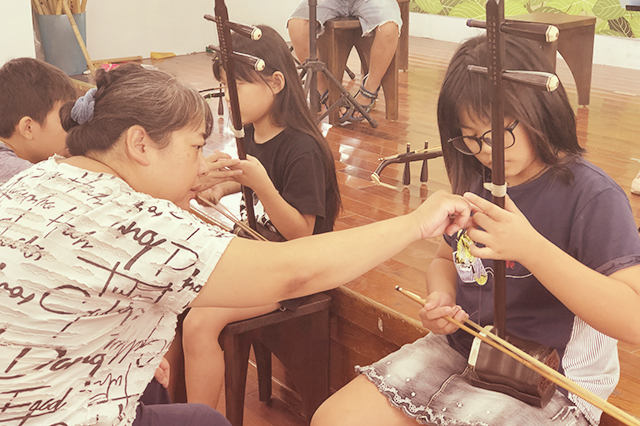
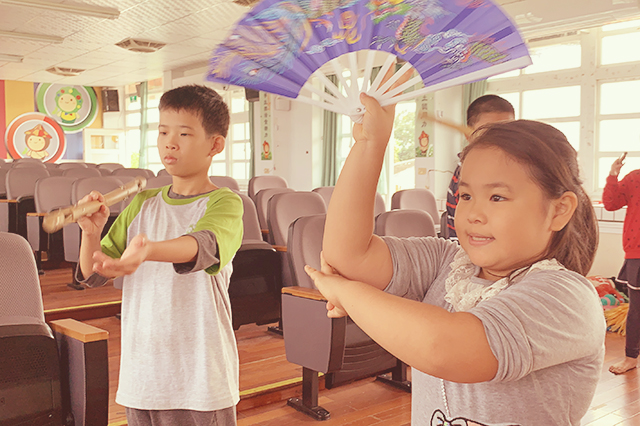
2. After starting the research:
After experiencing the Tshia-Kóo-Lāng culture in person, I was strongly charmed by the Tshia-Kóo-Lāng culture. We actively invited teachers to guide us in the Tshia-Kóo-Lāng team. The teacher also suggested us to plan independent research courses. In addition to inviting Tshia-Kóo-Lāng artists from Kaohsiung to guide us in Tshia-Kóo-Lāng exercises, the teacher also took us to the community to conduct field surveys and interviews. Community directors, elders, and temple wishes let us have a deeper understanding of the Tshia-Kóo-Lāng culture.
During the interview, the elders interviewed told us many things we didn't know and also solved many of our questions! This is an interesting field investigation. In the process of recording, I learned the way of writing and documentary recording, and even more incredible things. I learned to sort out my own problems and learn to be polite to the public.
Before the field survey, the teacher used mind map and teach us to learn more systematically. At the same time, he also told us about problems that may arise during the interview and gave us suggestions! Then, based on our ideas, he discuss with us whom we want to conduct field surveys. According to the subjects, draft the questions we want to ask and discuss with the teacher the feasibility or the content of the questions that can be changed. On the day of the actual field survey, the companions assisted in recording, and someone was responsible for taking pictures to record the entire process. Everyone took turns asking questions to the interviewees and carefully recorded the information they heard. Although the time for the field survey was very late, our teacher was still with us and assisted us in the follow-up data compilation and experience writing.
In class, we started with the experience record and discussed how to improve the research methods. We enhance the field investigation skills step by step. Now we have conducted more than three field investigations. In each interview, not only enhance our ability to speak, but also give us great confidence and courage.
Every week, I will have the opportunity to practice the frontcourt and Wenwu field of the Tshia-Kóo-Lāng. With independent research courses, I know how to start the visit. I also have improvement on the text writing and video recording. We cherish this opportunity very much. In addition to learning from each other, we can strengthen our ability through teamwork. This is also the result of our in-depth practice of field investigation! Tshia-Kóo-Lāng really brought us a very different and wonderful experience!
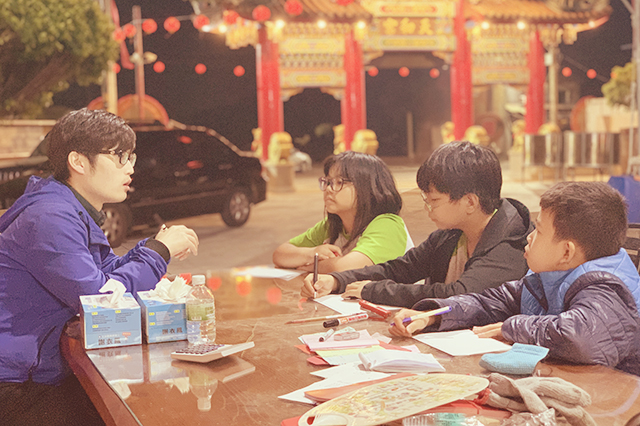

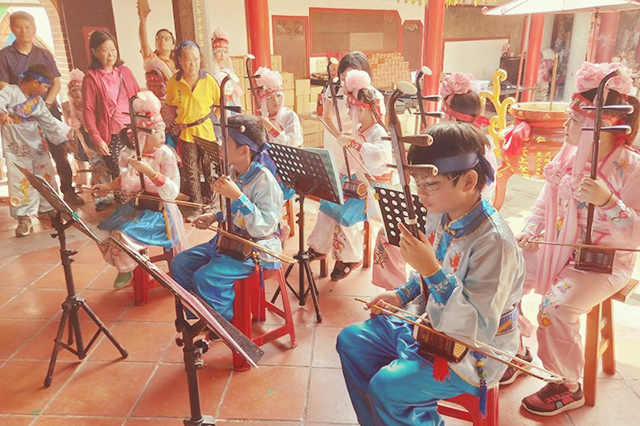

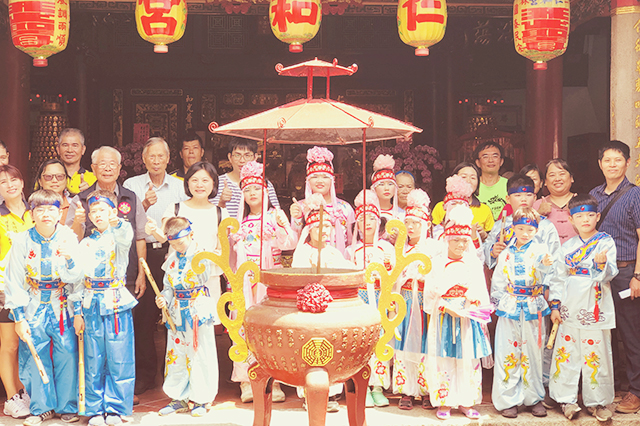
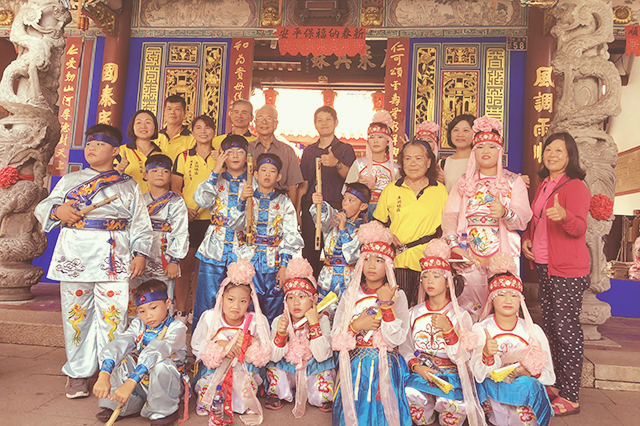
Bibliography
Lin Shuxin (2010). Qualitative research: theory and practice. Taipei City: Ju Liu.
Lin Beauty (2013). Changhua County Museum of Songs and Wuguan, "Southern Changhua Coastal" Taipei City: Morning Star.
Pan Shuman (2003). Qualitative research theory and application. Taipei City: Psychology.
Lin Jixuan (2016). Investigation and Research on Che Guzhen Formation in Changhua County. (Unpublished master's thesis). Private South China University, Chiayi County.
Huang Lingyu (1990). Explore the origin of Taiwanese car drum music from a field survey in southern Fujian car drum. Taipei: National Music Series.
Zeng Yongyi and Shi Deyu (2011). An Introduction to Local Opera. Taipei City: Sanmin Bookstore.
© 2020 GuangXing Elementary School. All rights reserved | Modified by Curtis | Design by W3layouts.









